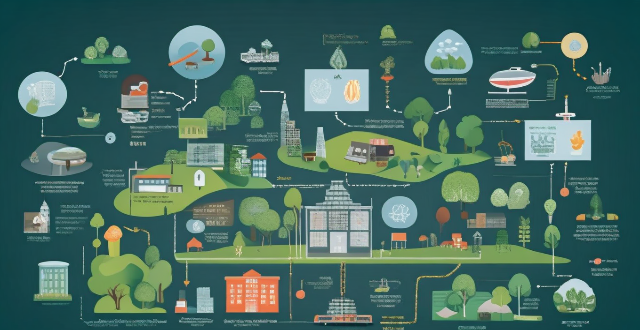In the face of climate change, technology offers numerous solutions to enhance food production and distribution, contributing to global food security. Key areas where technology can make a significant impact include precision farming, genetic engineering, data analytics, water management, digital infrastructure, supply chain optimization, urban agriculture, and policy support. By leveraging these technological advancements, we can mitigate the adverse effects of climate change on agriculture and ensure a stable and sustainable food system for all.

Can Technology Help Improve Food Security in a Changing Climate?
Introduction
As the climate continues to change, food security becomes an increasingly pressing issue. The question arises: can technology help improve food security in the face of these challenges? This article will explore the various ways in which technology can be leveraged to enhance food production and distribution, ultimately contributing to global food security.
Key Points
- Climate Change Impact on Food Security: Understanding the effects of climate change on agriculture is crucial for identifying areas where technology can make a difference.
- Technological Advancements in Agriculture: From precision farming to genetic engineering, technology offers numerous solutions to combat climate change's impact on food production.
- Data Analytics and Predictive Modeling: Leveraging data to predict weather patterns, crop yields, and pest outbreaks can optimize agricultural practices.
- Water Management Technologies: Efficient irrigation systems and water recycling techniques are essential for sustainable farming in changing climates.
- Digital Infrastructure and Connectivity: Enhancing connectivity through digital infrastructure enables better access to information, resources, and markets for farmers.
- Supply Chain Optimization: Streamlining supply chains with technological innovations ensures that food reaches consumers more efficiently and reduces waste.
- Urban Agriculture and Smart Farming: Integrating technology into urban farming practices can increase local food production and resilience.
- Policy and Regulation: Government policies must support technological advancements in agriculture to ensure their widespread adoption and effectiveness.
Climate Change Impact on Food Security
Climate change presents significant challenges to food security by affecting crop growth cycles, increasing the frequency of extreme weather events, and altering pest and disease patterns. These factors can lead to reduced crop yields, higher prices, and increased vulnerability for communities relying on agriculture for their livelihoods.
Technological Advancements in Agriculture
Precision Farming
Precision farming involves using technology like GPS, drones, and sensors to monitor crops and soil conditions precisely. This allows farmers to apply exactly the right amount of water, fertilizer, or pesticides needed, reducing waste and improving yields.
Genetic Engineering
Through genetic engineering, scientists can develop crops that are more resistant to drought, heatwaves, or pests. These genetically modified organisms (GMOs) may play a vital role in adapting agriculture to changing climates.
Data Analytics and Predictive Modeling
Leveraging big data analytics and predictive modeling can help farmers make informed decisions about planting schedules, crop rotations, and resource allocation. By analyzing historical weather patterns and current trends, farmers can prepare for potential challenges before they occur.
Water Management Technologies
Efficient irrigation systems such as drip irrigation or flood irrigation coupled with water recycling techniques can significantly reduce water usage while maintaining crop health. This is particularly important in regions experiencing drought or irregular rainfall patterns due to climate change.
Digital Infrastructure and Connectivity
Enhancing digital infrastructure and connectivity in rural areas provides farmers with access to critical information, such as market prices, weather forecasts, and best practices. This knowledge empowers them to make more strategic decisions about their operations.
Supply Chain Optimization
Technologies like blockchain and internet of things (IoT) devices can streamline the supply chain by providing end-to-end traceability of food products. This transparency reduces inefficiencies, cuts down on waste, and ensures that food reaches consumers in optimal condition.
Urban Agriculture and Smart Farming
Incorporating technology into urban agriculture through vertical farming or hydroponic systems can increase local food production and reduce reliance on distant suppliers. Smart farming methods also allow for year-round growing indoors, regardless of external climate conditions.
Policy and Regulation
For technology to have a meaningful impact on food security, government policies must support research, development, and implementation of these innovations. This includes investing in infrastructure, creating incentives for adoption, and ensuring equitable access to these technologies across different socioeconomic groups.
Conclusion
Technology undoubtedly has the potential to improve food security in a changing climate. From precision farming tools to advanced irrigation systems and data analytics platforms, there are numerous ways in which tech can aid in mitigating the adverse effects of climate change on agriculture. However, it is essential for policymakers to create an environment conducive to technological advancement and integration within the agricultural sector. Only then can we harness the full potential of technology to ensure a stable and sustainable food system for all.